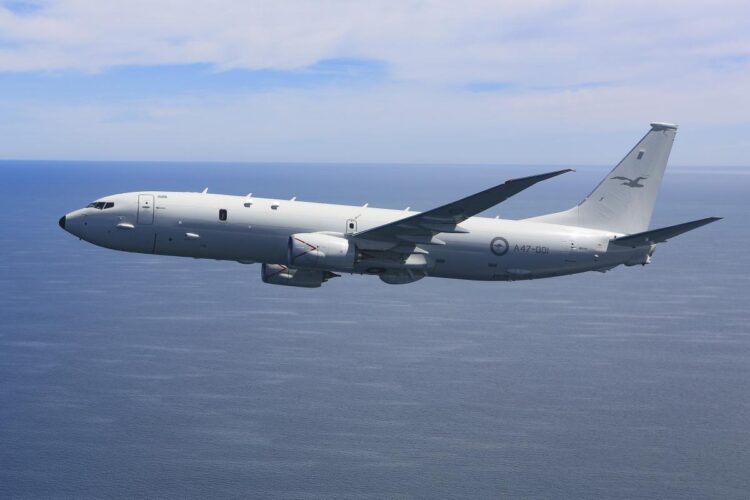By Martin Cole-
Australia and Canada are developing rising tensions with China , after recently accusing them of conducting dangerous intercepts of maritime patrol aircraft performing routine surveillance and sanctions-monitoring missions over the East and South China seas.
Beijing earlier this week warned Australia to “act prudently” or face “serious consequences” after Canberra accused a Chinese fighter jet of dangerously intercepting one of its spy planes over the South China Sea.
Australia insisted on Wednesday that its patrol plane was in international airspace when a Chinese warplane intercepted it and released a cloud of small aluminium strips, known as chaff.
Australia claims that a Royal Australian Air Force P-8A Poseidon was intercepted by a Chinese People’s Liberation Army Air Force Shenyang J-16 fighter over the South China Sea while the former was conducting a “routine maritime surveillance” mission on May 26.
The intercept subsequently led to a “dangerous manoeuvre,” according a news release from the Australian Defence Department. Defence Minister Richard Marles later said the Chinese jet release chaff while flying just ahead of the Australian aircraft, leading to the chaff’s aluminum strips, which are designed to confuse radars, to enter the P-8′s engine.
Data from flight-tracking website Plane Finder reveals the P-8A was most likely one of two operating from Clark Air Base in the Philippines, with the aircraft returning three hours after taking off and circling the airfield for an hour before landing.
The incident was flagged after Canadian news portal Global News reported Chinese jets are regularly flying as close as 20-100 feet from a Royal Canadian Air Force CP-140 Aurora, while monitoring activity around North Korea.
The CP-140 is monitoring illegal ship-to-ship transfers of material making its way into and out of North Korea in defiance of United Nations sanctions set up in response to the country’s nuclear and ballistic missile programs. The Canadian aircraft operates from Kadena Air Base on the Japanese island of Okinawa as part of Operation Neon.
It is one of several international assets performing similar missions, which take place mainly over the East China Sea and Yellow Sea. These include another Australian P-8 operating from Kadena under Operation Argos.
Global News reported there have been about 60 intercepts of the CP-140, which is the Canadian designation of the P-3 Orion maritime patrol aircraft over international waters by Chinese fighter jets since December 2021.
More than 12 of these intercepts were deemed dangerous by Canada, with the CP-140 crews reporting the Chinese jets sometimes get close enough that crew members can “make eye contact with the Chinese pilots, and sometimes see them raising their middle fingers,” according to the news report.
The tension adds to existing tensions between the U.S and North Korea, all in the midst of the Russia and Ukranian war.
In the past 24 hours, the U.S has raised alarm that North Korea are planning to test nukes, and have warned of a ‘swift and forceful response’ if he carries out a fresh nuclear test that the US and South Korea believe he is preparing for.
Wendy Sherman, US Deputy Secretary of state, declared the test a ‘complete violation of UN Security Council resolutions’, insisting it will not go unanswered.
In the midst of her speech, 20 American and South Korea fighters – including latest-generation F-35 stealth jets – took part in drills over the Yellow Sea which Seoul said was designed to test its ‘overwhelming response’ to any threats.
The military added that the interactions were “unprofessional and/or put the safety of our RCAF personnel at risk,” adding that in some instances, crew members “felt sufficiently at risk that they had to quickly modify their own flight path in order to increase separation and avoid a potential collision with the intercepting aircraft.”
China issued rebuttals of its own against Australian and Canadian accusations, with Defense Ministry spokesman Senior Col. Tan Kefei accusing the Australian P-8 of entering airspace “near China’s Xisha Islands for close-in reconnaissance and continuously approached China’s territorial airspace over the Xisha Islands in disregard of repeated warnings from the Chinese side”
Kefei added that the People’s Liberation Army dispatched naval and air forces in response, whose actions were “professional, safe, reasonable and legitimate.”
Another spokesman, Senior Col. Wu Qian, accused Canadian military aircraft of increasing “close-up reconnaissance and provocations against China under the pretext of implementing the United Nations Security Council Resolutions,” adding that China’s responses were “reasonable, effective, safe and professional.




